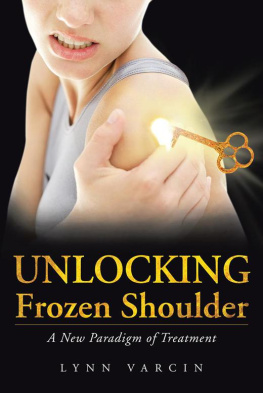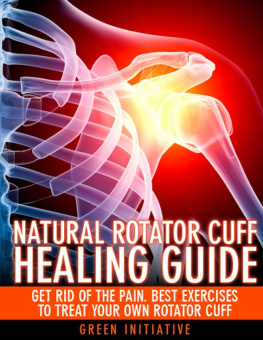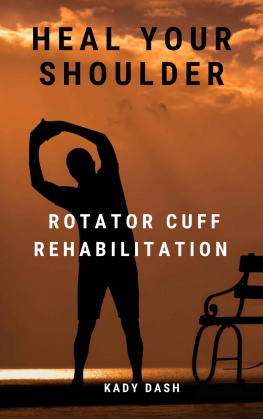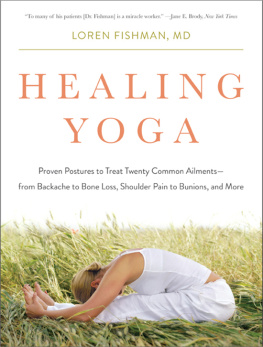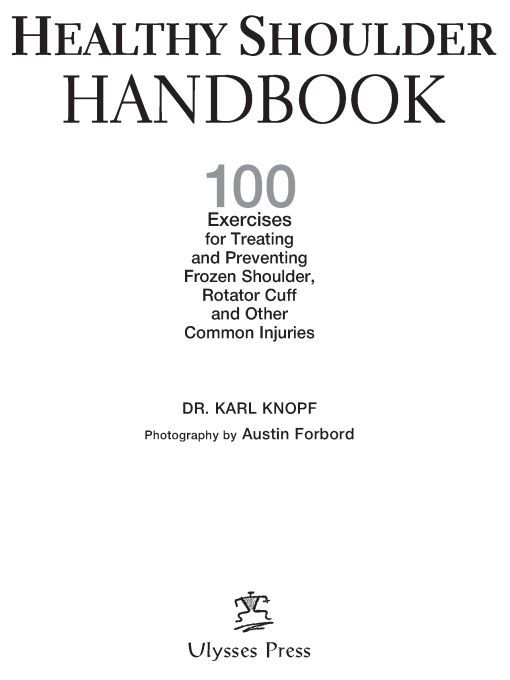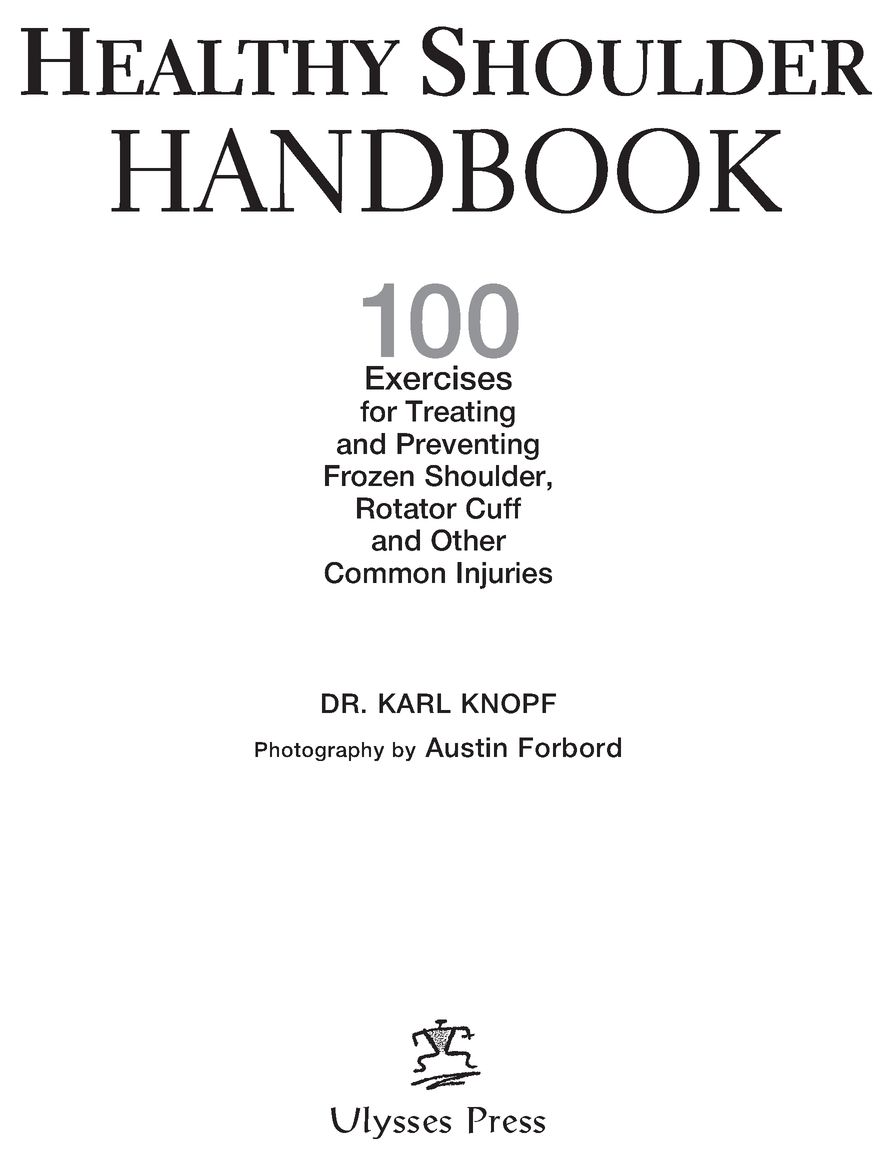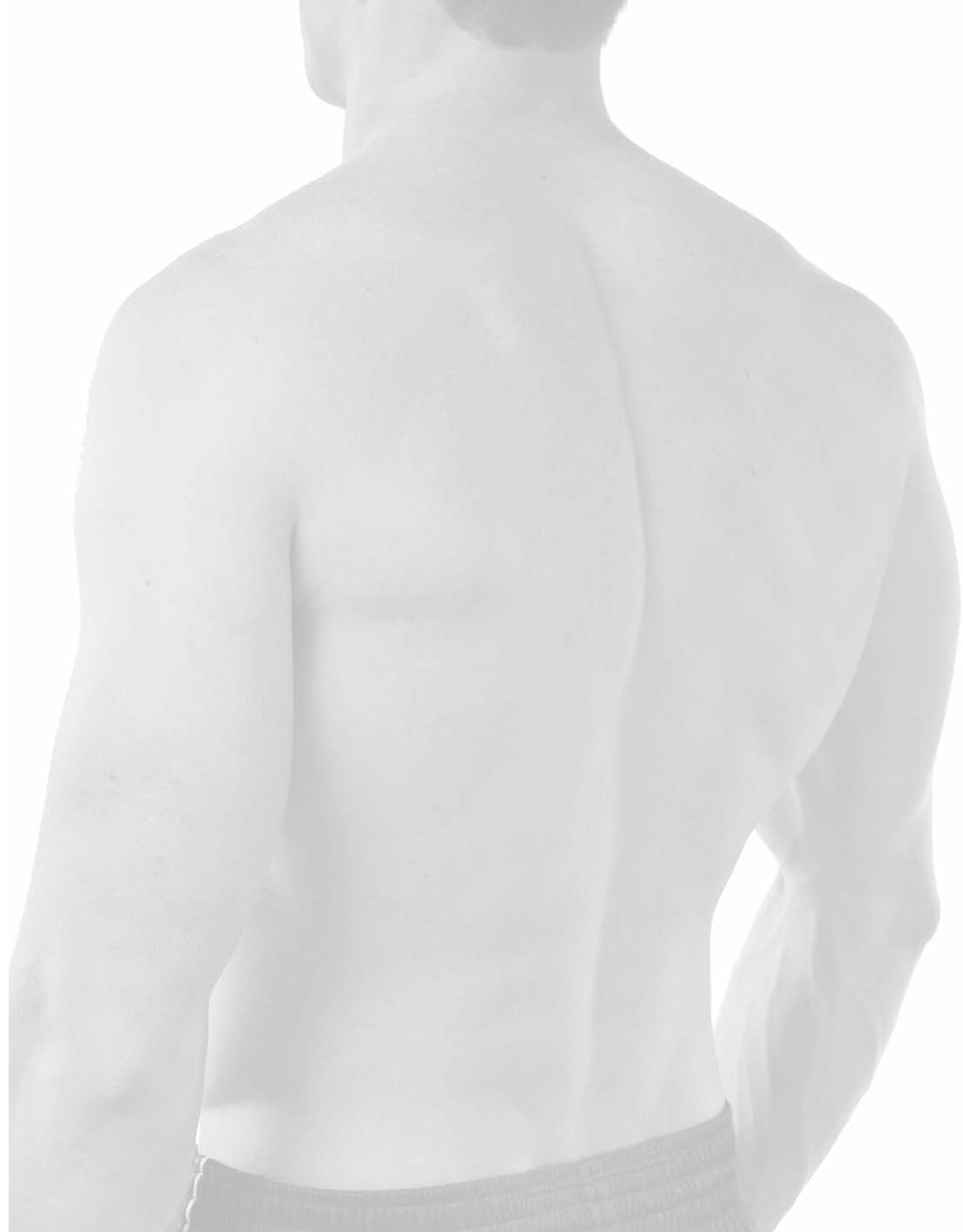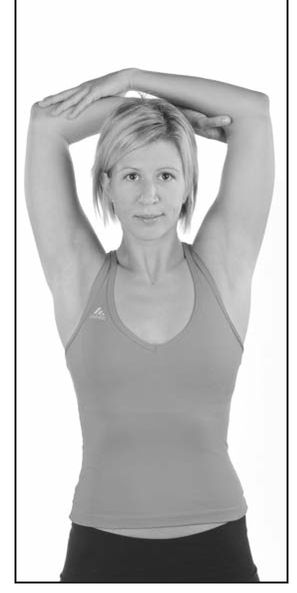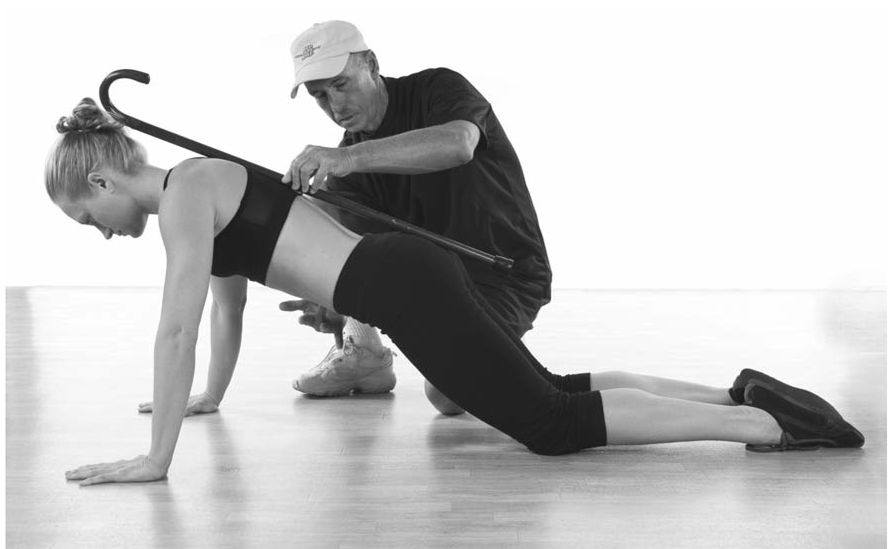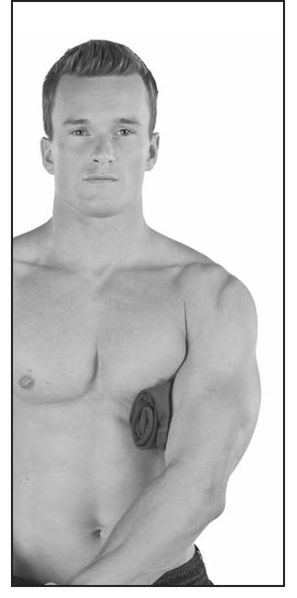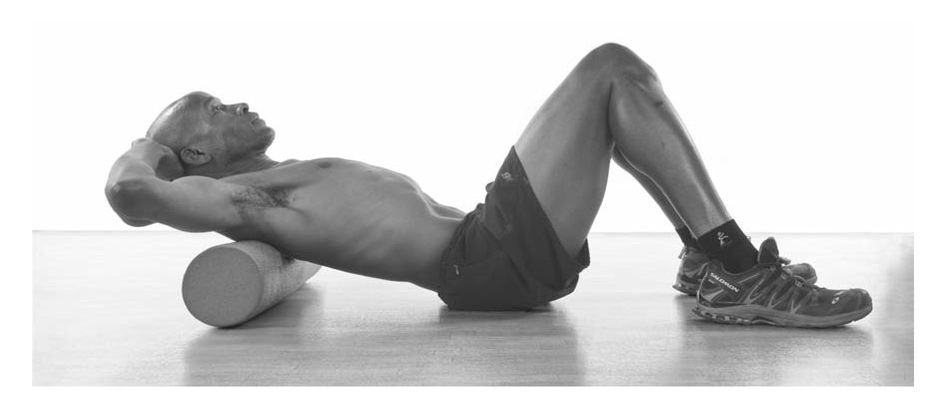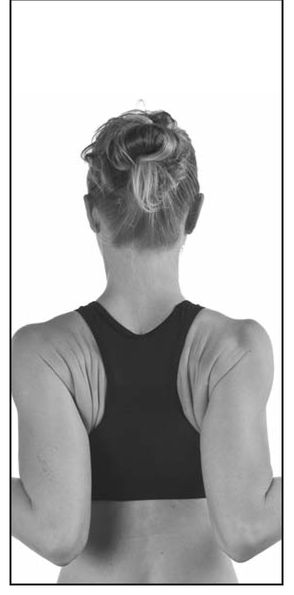Table of Contents
part 1
getting started
introduction
Almost everyone has a shoulder problem at some point in their lives. Most people think it wont happen to them, that it only happens to high-priced baseball pitchers or Olympic swimmers. However, approximately 14 million people visit the doctors office each year because of a shoulder problem, although many people try to play through the painhoping it will go awayonly to have a small problem become a debilitating handicap. Oftentimes, the onset of the problem manifests slowly over time and is neglected until it affects the persons range of motion or the pain is unbearable.
The incidence of shoulder dysfunction is caused by many variables. Some may result from falls, such as a tackle in football or a misstep walking down the street; others may come from overuse, such as daily golf swings or manual wheelchair use. Shoulder problems can inconvenience the weekend athlete, the office worker hunched over a computer, the home owner who paints a bedroom wall.
Here are some signs you may have a shoulder problem:
Its difficult to move a computer mouse around on the desk.
It hurts to reach up and put groceries away on a high shelf.
You hear your shoulder pop after throwing a ball for your dog to chase or after serving an ace in tennis.
Its uncomfortable to reach into your back pocket to grab your wallet or to reach behind your back to zip up your dress.
Most people who see the doctor for shoulder problems are affected by injuries to soft tissue surrounding the shoulder area. The goal of this book is to acquaint you with possible shoulder conditions and offer suggestions for prevention. It is not a substitute for medical care. The hope of this book is for you to learn to TRAIN SMART, NOT HARD, because learning to listen to your body and heed what it says is the wisest thing you can do. Identifying a small shoulder issue and engaging in active rest along with performing corrective exercise can go a long way in keeping you in the game.
Author Karl Knopf makes some adjustments.
who gets shoulder problems?
The shoulder is a complex joint, and pain can be referred from the neck or other areas of the body, creating different degrees of shoulder problems. The percentage of people experiencing shoulder problems depends on the criteria used to define shoulder pain, such as pain levels or restricted movement.
Researchers compared two methods for estimating the prevalence of shoulder pain in 312 people and found that the percentage of those who had shoulder problems within the past month varied from 31 percent to 48 percent, depending on the definition of shoulder problems used. If the definition was restricted to pain rather than restricted movement, the percentage was 20 percent. However, limited range of motionnot painis listed as the main reason many people see their doctor.
Increasing research affirms that one body part used incorrectly can affect another body part along the kinetic chain. In simpler terms, if a person misuses his or her body biomechanically or overcompensates for a weakness in another part of the body, different parts of the body can be affected. For example, sitting incorrectly at the computer can negatively affect the shoulder, while poor hand placement on the keyboard can affect the shoulder and neck. Neck and shoulder complaints, in fact, are reported more frequently than complaints about any of the other upper body regions, and women have a higher prevalence of upper-extremity musculoskeletal complaints than men.
With regard to shoulder pain, an article in
Rehab Management (April 2007) found that:
Women are more often affected than men.
People who engage in repetitive overhead motions (such as swimming the crawl or backstroke, playing tennis, washing windows or hanging wallpaper) are more prone to shoulder pain.
According to the study, a strong predictor of whether a man would get a shoulder problem in the work place depended on the type of tool used in a repetitive manner. The two predictors for women depended on if she was using a vibrating tool (the constant jarring and vibration along with the repetitive motion can lead to serious macro traumas) or if her work involved frequently keeping her arms above her head. Research found that even when women performed the same type of job at the same company as men, women had a higher incidence of shoulder complaints. With age, the prevalence increased linearly and peaked around the age of 50.
A couple of explanations have been suggested for the gender differences. Historically, women have less upper body strength than men, thus a five-pound object has a relatively greater impact on a woman, who has less strength and possibly less body weight. The European Foundation for the Improvement of Living and Working Conditions suggested that women tend to perform more repetitive work than men, and women are more likely than men to remain in a prolonged position while working. Additionally, the study found that women are often exposed to additional physical demands, such as housekeeping and childcare.
Today we see even children complaining of shoulder and neck pain. Several factors are contributing to this problem: poor posture, poor biomechanics while playing computer games, back and shoulder strain from carrying heavy backpacks, or overzealous coaches pushing children beyond their physical limits.
This book provides an overview of shoulder anatomy, as well as common causes and injuries to better understand prevention. With the supervision of your doctor, anyone can use this book to strengthen an injured shoulder or identify the onset of a shoulder problem.
shoulder anatomy
The shoulder, more accurately called the shoulder girdle, is a remarkable, complex joint. It can gently toss an egg back and forth, rock a baby to sleep, hurl a baseball at 90 mph and generate a 100-mph serve in tennis. An engineering marvel, its design allows for maximum flexibility and function in almost every conceivable direction.
This mobility, however, is also why the shoulder joint is so vulnerable to overuse and injuries, and one reason why it is the most difficult and complicated joint in the body to rehabilitate.


